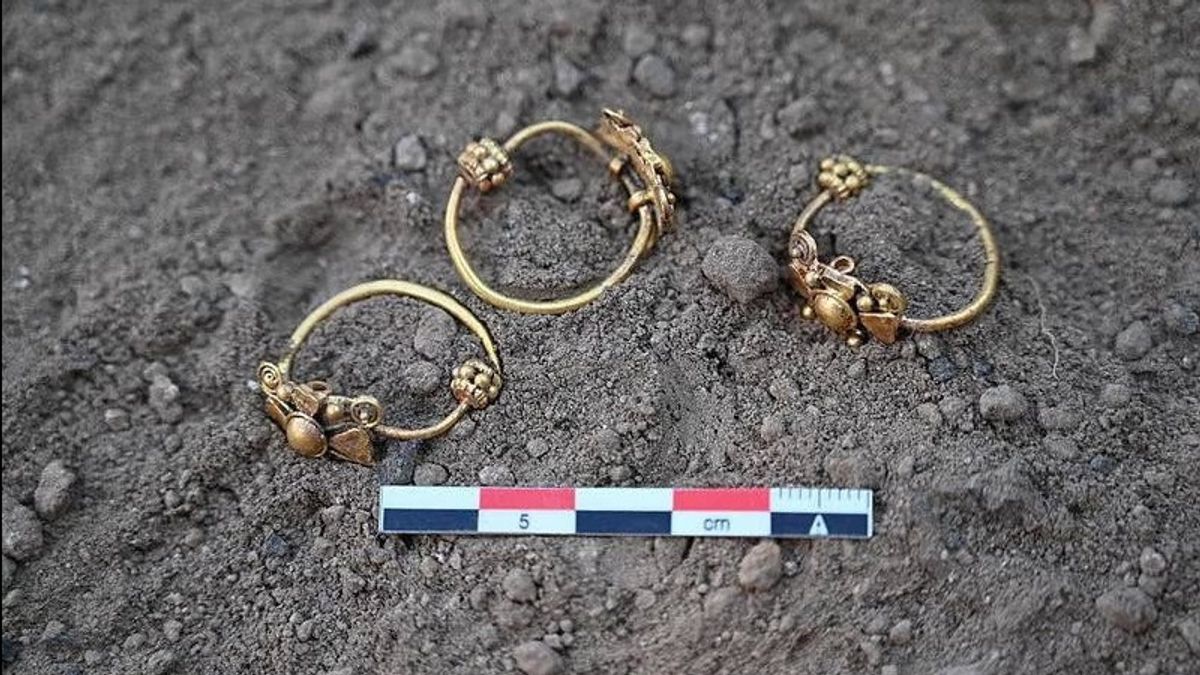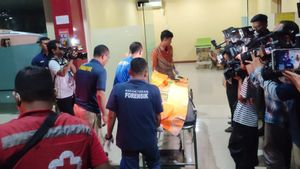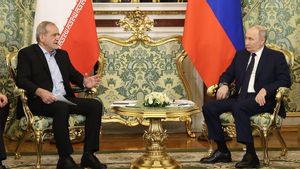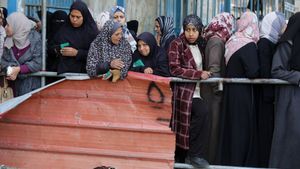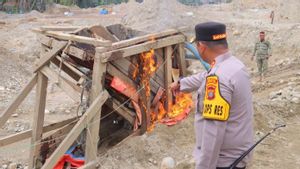JAKARTA - Saudi Arabia's Heritage Commission announced the discovery of three gold rings, bronze bull heads and the southern Musnad inscription on the rockstone, all from the pre-Islamic era, at the Al-Okhdood archaeological site, a village in Najran.
All of these rare discoveries are currently in the hands of professionals and are undergoing restoration. Salma Hawsawi, a professor of ancient history at the University of King Saud, told Arab News that Najran was a mandatory cemeterical stop for travelers traveling from the south of Saudi Arabia in ancient times.
"Two commercial routes are branched from it, one of which is heading northeast, passing through Al-Faw village, and ending in the east of Jazirah Arab, while the second road is heading north to reach Petra and from there to the cities of Levant and Mesopotamia," he said. February 21st Arab News.
The inscription is written in a unique standing letter using the ancient South Arab script, called Musnad. It is 230 cm long and approximately 48 cm high, with a letter length of 32 cm, making it the longest Musnad inscription found in the region. It is said to belong to a former resident of Al-Ukhdood, Wahb El bin Maqen.
"Warning inscriptions can be found in most of the large numbers of Arab jazirah, reflecting the level of advanced knowledge and culture achieved by the public and how concerned it is with writing and documentation," explained Hawsawi.
"The inscription also shows that the water repairman is the Wahab profession, which is to deliver water to his homes, including his own house. It also shows the names of common Arabs during that period, because the owner of the inscription mentioned his name and the name of his father," continued Hawsawi.
Another interesting discovery is that the bronze bull's head has traces of oxidation, a natural reaction when bronze is exposed to air, creating a coating ofpatina with various colors.
"The image and statue of the head of the bull first appeared in the south of Jazirah Arab around the first millennia of BC," he explained.
It is said to have become a symbol of strength and fertility for the pre-Islamic South Arab group: Sabaean, Minaeans, and Qatabanians. It is also known for its versatility in everyday life, because it is used to hijack soil, its meat is eaten and its skin is used in various industries.
It symbolizes the moon because of the resemblance of the bull's horn to the sickle moon. According to Hawsawi, the moon is called "Wad" by the Minaean people, and it is known by the Saba people and others as "Warkh", "Al-Maqah", "Shahr", "Kahl", and "Sun" in Hadramout.
"The moon is the oldest god and preceds them all. It is usually referred to as 'Al' or 'El', while the Arabs in the north call it 'Baal' or 'Hubal'. The moon holds a very special position, because it is a guide for trade cyclones and travelers. This is why it is given the title as 'The Wise,' 'The Honest,' 'The Wise,' 'The Blessed,' 'The Helper,' and 'Protecter,'' said Hawsawi.
Speaking of three gold rings, Hawsawi said: "Through this discovery, we know the metals used by the people at that time. Gold rings equipped with keys at both ends show they are used in different ways and places, along with the possibility of adjusting their size according to their needs."
"They are worn on the finger, on the arm or around the ankle. They are used for aesthetic purposes by men and women," he continued.
"When they arrived at the ring found on the Al-Okhdood site, they were used by women based on the way they were made, the gold lobe on them and the butterfly-shaped key," said Hawsawi.
Furthermore, the associate professor also highlighted the golden profession found in ancient Arabic inscriptions.
"This profession spread throughout Jazirah Arab, where jewelry maker melts and purifys the metal by blowing the fire to melt the metal before reshaping it," he explained.
In addition, archaeologists also found large numbers of pottery in various sizes, one of which wasdent pottery, indicating human settlements in the region dating back to the third century BC.
Hawsawi explained that the site in Al-Okhdood, which they recently visited with a group of researchers and specialists, is located inside a wall with about 20 graded buildings made of mud bricks. The smallest building on the site is 6 meters high and the largest is 14 meters.
"There is only a foundation, namely a collection of stone installations with several animals, such as horses and camels. Some buildings are engraved with inscriptions on the southern Musnad line, most of which are memorial inscriptions," he explained.
The site also includes two stakestones each used for different purposes.
Some researchers suggested that they anneal the seeds while others stated that they were to melt the metal, because of its large size, and could not be moved by humans because of its weight. Built from a rock, and also because of its large size, it is likely that many animals are used to move this mill," he explained.
It is known, this is the eleventh season that Saudi experts have fulfilled the archaeological excavation project. The Heritage Commission has been exploring Najran in the past and found many discoveries about the history, culture, and community of the land.
The Commission has divided projects into various categories, such as archaeological, city heritage, handicrafts, and intangible cultural heritage.
In each category, a group of special people from Saudi Arabia and abroad uncovers more of the Kingdom's heritage, culture and goals than ever before.
Reflecting Saudi Vision 2030 on the promise of a "excited society with strong roots", the Heritage Commission has formed a major initiative to expand research in Saudi Arabia that has not yet been explored.
The English, Chinese, Japanese, Arabic, and French versions are automatically generated by the AI. So there may still be inaccuracies in translating, please always see Indonesian as our main language. (system supported by DigitalSiber.id)
